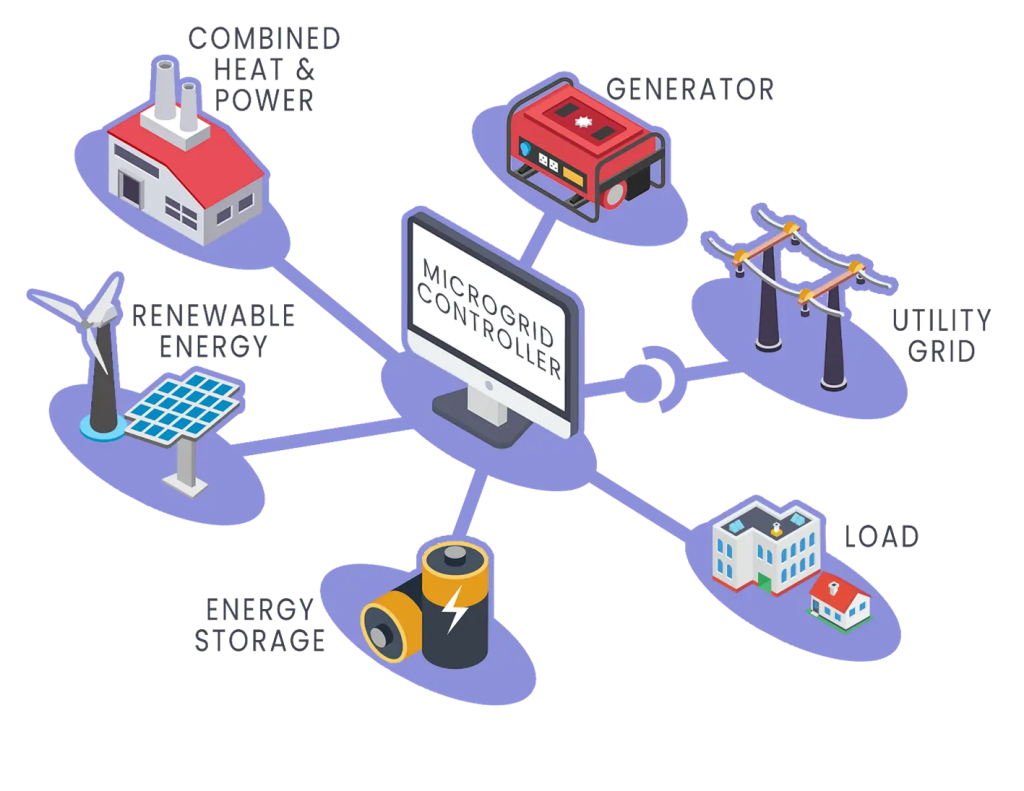
The electric grid suffered significant hardships in recent years. From the Texas blackout in 2021 to significant weather events like hurricanes and snowstorms, the need for reliable power has never been more critical. Time Magazine reported that even more power outages can be expected due to climate change (Barone, 2022). To address this issue, some organizations have begun using microgrids to ensure reliable power is always available. And a Black Start procedure allows affected organizations to restore power themselves.
A microgrid is a decentralized network of generators and loads that can be disconnected from the larger power grid. This blog post by Derek Meier is a fantastic resource to begin your journey into the world of microgrids.

Many microgrids have unique loads that depend on fast and efficient power restoration. A college campus may lose critical research during an extended power outage. A hospital may have patients relying on vital equipment to provide life-saving patient care. In short, organizations will benefit from the improved resilience and reliability that a black start procedure will provide.
While improbable, it is possible under certain conditions for a loss of entire sections of the grid. Rick Cragg wrote a great article exploring the stability of the power grid and discussed some potential situations that could result in a loss of power. His article can be reached here.
Is your facility prepared to handle the sudden loss of power? Do you have backup units to supply power during the outage? And, if so, how long can those backup generation units run? The development of a Black Start procedure allows a facility to operate independently of the grid. Regardless of the status of the outside electric grid, a microgrid with a Black Start procedure will be able to restore and use its electrical distribution system.
A Black Start procedure allows affected organizations to restore power themselves. They are self-reliant for power restoration and do not depend upon an external power supplier (Seo, n.d.). Black Start facilities can even help restore grid portions following a widescale power outage. Microgrids with a black start procedure become self-sufficient and gain the ability to protect their investments without reliance on external sources.
Black Start Procedures provide a microgrid with several benefits:
Black start procedures allow facilities to provide their startup power. This enables them to restore power independently from interconnection points. Microgrid sites can rapidly restore power to critical assets regardless of the power status from larger sources.
This increased reliability protects critical assets and investments from potential damage and loss due to the unavailability of power. Microgrids are popular in universities. The ability to quickly restore power from a large power outage enables facilities to protect assets and investments that may be lost or destroyed due to a sustained power outage. In many cases, the rapid restoration of power provided by a black start procedure may protect a university from losing years or decades of research.
While not directly a feature of black start capability, microgrids allow the facility increased operational flexibility. If the power grid is unstable or compromised, a microgrid can separate from the larger power source and operate independently. The ability to transition between an island mode and receiving power from an interconnection provides flexibility that would otherwise be unavailable. In addition, the ability to operate independently from a supplier with the comfort that the facility can restore power is invaluable.
A black start procedure offers the facility a path to move forward if power is lost while operating as an island if generating units experience a casualty. Black start procedures are essential for reliability, flexibility, and asset protection for microgrid facilities. The ability to rapidly recover from a widespread blackout is necessary to ensure a reliable power supply with minimal power interruptions. Any facility that is concerned about the potential impact from a sustained loss of power will benefit from the creation and implementation of a black start procedure.
Barone, E. (2022, November 18). U.S. is facing more power outages due to extreme weather. Time. https://time.com/6235156/extreme-weather-us-power-outages/
Seo, G.-S. (n.d.). Black start. NREL. https://www.nrel.gov/grid/black-start.html